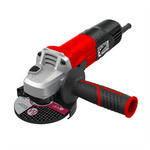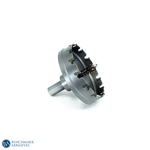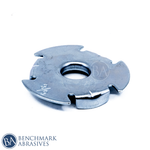
How To Use A Circular Saw To Cut Pavers

It is a given that you will need to cut some pavers to match the pattern. This includes using brick, stone, or concrete pavers to make a patio, driveway, or pathway. Simple hand tools and entry-level power tools are just a couple of the excellent tool alternatives available to do-it-yourselfers.
The ideal tool for your job depends on the circumstances. If you already have a circular saw or angle grinder, get a diamond blade for cutting masonry. This article will explore cutting pavers with a circular saw in more detail.
When cutting pavers, wear the following PPE
-
For all cutting techniques, safety glasses protect against flying debris or pieces.
-
Dust masks offer protection against the debris produced by a concrete saw or grinder.
-
Hearing protection is advised when utilizing noisy power saws or grinders.
6 Easy Steps To Cut Pavers With A Circular Saw
Similar methods produce simple cuts when operating a regular circular saw (7 1/2-inch blade). In both scenarios, use a diamond blade designed for masonry and stone. To keep the paver in place while it is being cut, placing it on a non-slip surface (such as a rubberized all-purpose grip mat) is recommended. If necessary, you can also clamp the paver to your work surface.
Step 1: Mark The Cut
Using a pencil and a square or straight edge, draw a line across the top face of the paver. This is where cutting will occur. Transfer the line to the paver's underside.
Step 2: Using A Diamond Blade
Diamond masonry blades can cut pavers with a power saw. Since natural stone is much stiffer than brick or concrete, a blade made for cutting stone will ensure a smooth, even result. The blade will only go through pavers if it is marked for stone.
Step 3: Placing The Saw Blade
Place the paver on top of your work surface on a non-slip mat. If using a circular saw, set the blade to a shallow cut depth (1/8 to 1/4 inch).
Step 4: On The Top Side, Cut
Start by making a shallow cut along the specified line. Make multiple passes down the line, changing the saw depth with each pass until you reach a depth of around 1/2 to 1 inch.
Step 5: On The Bottom Side, Cut
The bottom face of the paver should then be cut in the same manner as the top face.
Step 6: Break Along The Cuts
Your work area should be level with the paver. Use a hammer to lightly but firmly hit the paver waste piece to break it along the cutting line.
How To Cut Pavers: Important Tips
All standard cutting techniques are effective for straight cuts; however, curved cuts should be performed using a circular saw or angle grinder. First, score the curved cut along the paver's top, about 1/8 inch deep. Break off most of the waste by making a full, straight cut tangential to (touching) the scored line. In the final step, make several cuts to reduce leftover waste.
Cover the base of your circular saw with blue painter's tape to protect the bottom and prevent dings from the paver surface. As soon as the project is finished, remove the tape.
Additional Tips For Cutting Pavers
The following are some tips for cutting pavers with a circular saw:
-
If you are a beginner, always practice on a scrape paver to understand how to cut pavers. This will give you an idea of your estimated speed and what technique to use.
-
Always consider a wet saw for cutting a paver. This saw uses water, which helps minimize dust and cools down the blades, offering smooth and accurate results.
-
You can rent a saw if you wish to cut a few pavers. Renting is more economical than buying a new one, ensuring easy access to tools without any investment.
-
Make sure the paver is clamped to minimize movement while cutting. Clamping provides better control and accuracy.
CONCLUSION
Blocks and concrete pavers can be cut with a saw machine. The type of blade makes a significant difference, though. Pavers are hard materials, so more cutting edges are required.



































































